Potřebujeme váš souhlas k využití jednotlivých dat, aby se vám mimo jiné mohly ukazovat informace týkající se vašich zájmů. Souhlas udělíte kliknutím na tlačítko „OK“.
ASTM D2622-10
Standard Test Method for Sulfur in Petroleum Products by Wavelength Dispersive X-ray Fluorescence Spectrometry
Automaticky přeložený název:
Standardní zkušební metoda pro oxid s ropnými produkty podle Vlnová délka disperzní RTG fluorescenční spektrometrie
NORMA vydána dne 15.2.2010
Informace o normě:
Označení normy: ASTM D2622-10
Poznámka: NEPLATNÁ
Datum vydání normy: 15.2.2010
Kód zboží: NS-20927
Počet stran: 12
Přibližná hmotnost: 36 g (0.08 liber)
Země: Americká technická norma
Kategorie: Technické normy ASTM
Kategorie - podobné normy:
Anotace textu normy ASTM D2622-10 :
Keywords:
analysis, diesel, gasoline, jet fuel, kerosene, petroleum, spectrometry, sulfur, wavelength dispersive x-ray fluorescence, X-ray, Petroleum products (liquid), Fuel oils, Spectroscopy--X-ray fluorescence (XRF), Fuel sulfur, X-ray spectrometry, XRF (X-ray fluorescence)--petroleum products, ICS Number Code 75.080 (Petroleum products in general)
Doplňující informace
| Significance and Use | ||||||||||||||||
|
This test method provides rapid and precise measurement of total sulfur in petroleum and petroleum products with a minimum of sample preparation. A typical analysis time is 1 to 2 minutes per sample. The quality of many petroleum products is related to the amount of sulfur present. Knowledge of sulfur concentration is necessary for processing purposes. There are also regulations promulgated in federal, state, and local agencies that restrict the amount of sulfur present in some fuels. This test method provides a means of determining whether the sulfur content of petroleum or a petroleum product meets specification or regulatory limits. When this test method is applied to petroleum materials with matrices significantly different from the white oil calibration materials specified in this test method, the cautions and recommendations in Section 5 should be observed when interpreting results. Note 2—The equipment specified for Test Method D2622 tends to be more expensive than that required for alternative test methods, such as Test Method D4294. Consult the Index to ASTM Standards for alternative test methods. |
||||||||||||||||
| 1. Scope | ||||||||||||||||
|
1.1 This test method covers the determination of total sulfur in petroleum and petroleum products that are single-phase and either liquid at ambient conditions, liquefiable with moderate heat, or soluble in hydrocarbon solvents. These materials can include diesel fuel, jet fuel, kerosene, other distillate oil, naphtha, residual oil, lubricating base oil, hydraulic oil, crude oil, unleaded gasoline, gasohol and biodiesel. 1.2 The range of this test method is between the PLOQ value (calculated by procedures consistent with Practice D6259) of 3 mg/kg total sulfur and the highest level sample in the round robin, 4.6 wt. % total sulfur. Note 1—Instrumentation covered by this test method can vary in sensitivity. The applicability of the test method at sulfur concentrations below 3 mg/kg may be determined on an individual basis for WDXRF instruments capable of measuring lower levels, but precision in this test method does not apply. 1.2.1 The values of the limit of quantitation (LOQ) and method precision for a specific laboratory’s instrument depends on instrument source power (low or high power), sample type, and the practices established by the laboratory to perform the method. 1.3 Samples containing more than 4.6 mass % sulfur should be diluted to bring the sulfur concentration of the diluted material within the scope of this test method. Samples that are diluted can have higher errors than indicated in Section 14 than non-diluted samples. 1.4 Volatile samples (such as high vapor pressure gasolines or light hydrocarbons) may not meet the stated precision because of selective loss of light materials during the analysis. 1.5 A fundamental assumption in this test method is that the standard and sample matrices are well matched, or that the matrix differences are accounted for (see 12.2). Matrix mismatch can be caused by C/H ratio differences between samples and standards or by the presence of other interfering heteroatoms or species (see Table 1). 1.6 The values stated in SI units are to be regarded as standard. No other units of measurement are included in this standard. 1.7 This standard does not purport to address all of the safety concerns, if any, associated with its use. It is the responsibility of the user of this standard to establish appropriate safety and health practices and determine the applicability of regulatory limitations prior to use. |
||||||||||||||||
| 2. Referenced Documents | ||||||||||||||||
|
Podobné normy:
Historická
1.1.2011
Historická
1.10.2013
Historická
1.9.2012
Historická
15.4.2012
Historická
1.5.2010
Historická
1.12.2012
Odebírejte informace o nově vydaných normách ZDARMA:
Chcete pravidelně odebírat informace o nově vycházejících normách z celého světa a to zcela zdarma?
Přihlašte se k odběru. Vše je velice jednoduché a absolutně ZDARMA.
Na výběr máte vydavatele z celého světa.


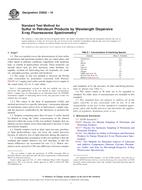
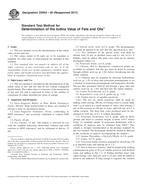 ASTM D5554-95(2011)..
ASTM D5554-95(2011)..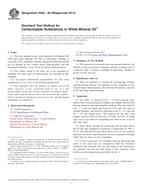 ASTM D565-99(2013)..
ASTM D565-99(2013)..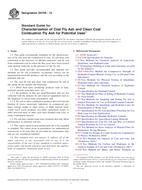 ASTM D5759-12
ASTM D5759-12 ASTM D5762-12
ASTM D5762-12 ASTM D5772-10
ASTM D5772-10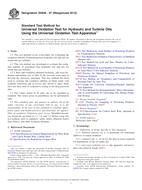 ASTM D5846-07(2012)..
ASTM D5846-07(2012)..
 Cookies
Cookies
